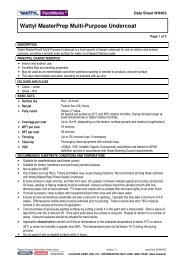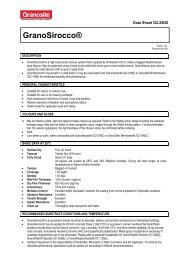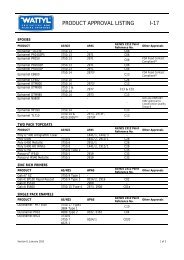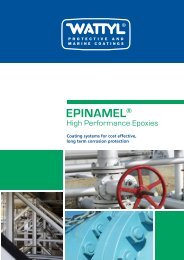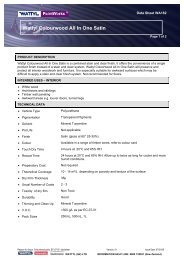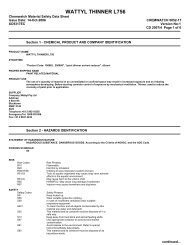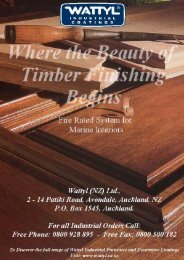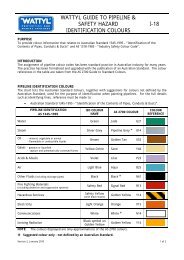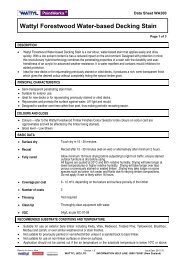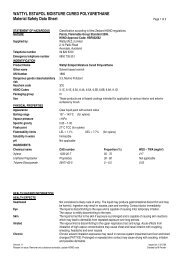Surface Preparation - Ferrous Metals - Wattyl Web Customer Service
Surface Preparation - Ferrous Metals - Wattyl Web Customer Service
Surface Preparation - Ferrous Metals - Wattyl Web Customer Service
Create successful ePaper yourself
Turn your PDF publications into a flip-book with our unique Google optimized e-Paper software.
SURFACE PREPARATION<strong>Ferrous</strong> MetalI-10Abrasive blast cleaning AS 1627.4 is the recommended standard for this method of surface preparation.Four classes of abrasive blasting are recognised and are summarised as follows:Sa 1 – Light Blast CleaningThis is often referred to as Whip Blasting. Cleaning to this standard required that loose mill scale, looserust and foreign matter are removed. <strong>Surface</strong> preparation to Sa 1 (AS 1627.9).Sa 2 – Medium Blast CleaningCleaning to this standard requires that mill scale, rust and foreign particles are substantially removed andthat grey metal is visible. <strong>Surface</strong> preparation to Sa 2 (AS 1627.9).Sa 2½ - ‘Near White’ Blast CleaningCleaning to this standard requires that mill scale, rust and foreign particles are removed to such a degreethat the only traces remaining are slight stains in the form of spots or stripes. <strong>Surface</strong> preparation toSa-2½ (AS 1627.9).Sa 3 - ‘White Metal’ Blast CleaningCleaning to this standard requires the entire removal of all mill scale, all rust and all foreign particles.The cleaned surface shall have a uniform metallic colour. <strong>Surface</strong> preparation to Sa 3 (AS 1627.9).3. HYDROJETTING / WET ABRASIVE BLASTINGHydrojetting is a surface preparation method which uses high-energy water to remove coatings, corrosionproducts and other surface contamination such as oil/grease etc. The energy of the water striking thesurface is used to achieve its cleaning effect. Hydrojetting does not provide a surface profile like abrasiveblasting, and flash rusting will occur immediately. In this case, specialist coating systems are required.Following is a list and description of various water cleaning/jetting methods:1. Low Pressure Water CleaningCleaning performed at pressures less than 34 MPa (5,000 psi). Typically used for cleaning oil,grease and other contaminants from the surface – in conjunction with detergents. It may removeloose flaking paint.2. High Pressure Water CleaningCleaning performed at pressures from 34 to 70 MPa (5,000 to 10,000 psi). Typically used forcleaning oil, grease and other contaminants from the surface – in conjunction with detergents. Itmay remove thin film coatings and loose flaking rust.3. High Pressure Water JettingCleaning performed at pressures from 70 – 170 MPa (10,000 to 25,000 psi). Typically used for theremoval of red oxide corrosion products (haematite), black oxide corrosion products (magnetite),many paints and chemical contaminants.4. Ultra High Pressure Water JettingCleaning performed at pressure above 170 MPa (25,000 psi). Typically used to remove most millscale, paints, chemical contaminants and radioactive material. It may remove base metal withprolonged application.Version 2, January 2010 3 of 8



